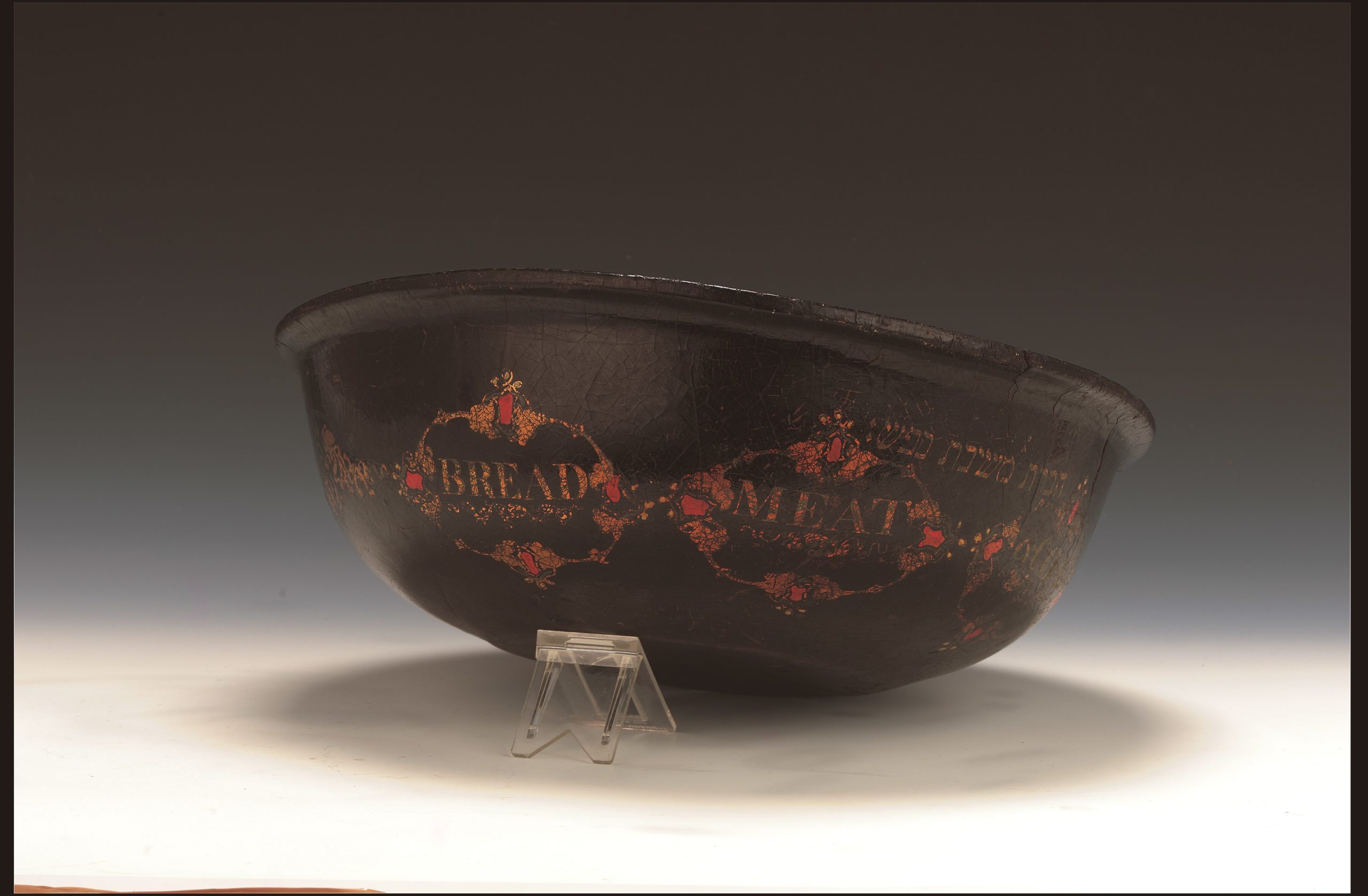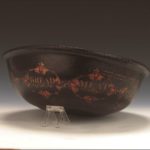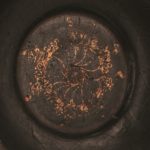Bread, Meat and Coal Society Bowl
- What do you see?
We can see a papier-mâché bowl painted black with red and gold decoration around the outside and inside of the bowl.
We can also see that the bowl is inscribed with ‘Bread Meat and Coal Society‘ and Hebrew writing.
Look closely, what can you see?
- What do you know?
The bowl was produced for and by the Meshebat Naphesh (Hebrew for ‘Spirit of the Sabbath’) Society. This organisation was established in 1779 to provide bread, meat and coal to poor Jews and was the first charity established by the Ashkenazi community in England. It later became known as the Society for Distributing Bread, Meat and Coal Amongst the Jewish Poor during the Winter Season’ and was commonly referred to as the ‘Jewish Bread, Meat and Coal Society’.
- What do you wonder?
We might wonder why the bowl is decorated.
We might wonder why some Jewish people received aid and what the conditions were like for Jews living in England during the 18th century.
What do you wonder?
- Object File
Object name: Jewish Bread, Meat and Coal Society bowl
Date: c. late 18th to early 19th century
Object number: C1999.2.87.1
Material: Papier-mâché
Size: Height – 12.4cm, Diameter – 40cm
On display at the Jewish Museum? Yes
The concept of Tzedakah refers to the ethical requirement of Jews to show righteous behaviour and act charitably by giving to those in need. It is seen as one of the most significant mitzvot (commandments) in the religion. Its importance is emphasised by the fact that the Rosh Hashanah liturgy lists Tzedakah alongside repentance and prayer as an act “capable of averting a negative divine decree.” Traditionally, Jews will usually give about a tenth of their income to charity.
The readmission of Jews to England began in 1656, after Oliver Cromwell was persuaded by esteemed Rabbi Menassah Ben Israel to lift the ban on Jews settling in England. From this point on many Jewish people came to England, such as the Ashkenazim who fled persecution in Central and Eastern Europe. By 1800, the majority of London’s 20,000 strong Jewish population were of Ashkenazi descent. The Ashkenazim assimilated more slowly into English society than other Jewish groups, such as the Sephardim, who were more accustomed to hiding their Jewish identity and interacted more frequently with non-Jewish communities. The Ashkenazim settled into lower-paid jobs, for example as street vendours known as “peddlers”. Therefore there was little improvement to their economic situation after moving from Europe in search of a better life.
The Meshebat Naphesh (Hebrew for ‘Spirit of the Sabbath’) Society was established in 1779 to provide bread, meat and coal to poor Jews. Large donations came from the successful and wealthier Anglo-Jewish families, including the Cohens, Goldsmids and Van Ovens. Further Jewish charitable organisations created after 1779 included the Society for Assisting the Poor for their Sabbath Necessities (nicknamed the “Five Shilling Society” due its generous handouts), established in 1798 and the Society for Clothing Poor Jewish Boys, established in 1813. By 1815, 30 charities in London existed to help the Jewish poor and vulnerable. During the winter of 1799-1800, Benjamin Goldsmid established a Soup Kitchen, which raised £360 from both Jewish and non-Jewish benefactors.
This object file was created by Amber Wahlhaus, Learning Intern.



